Amazing Heungryunsa Temple
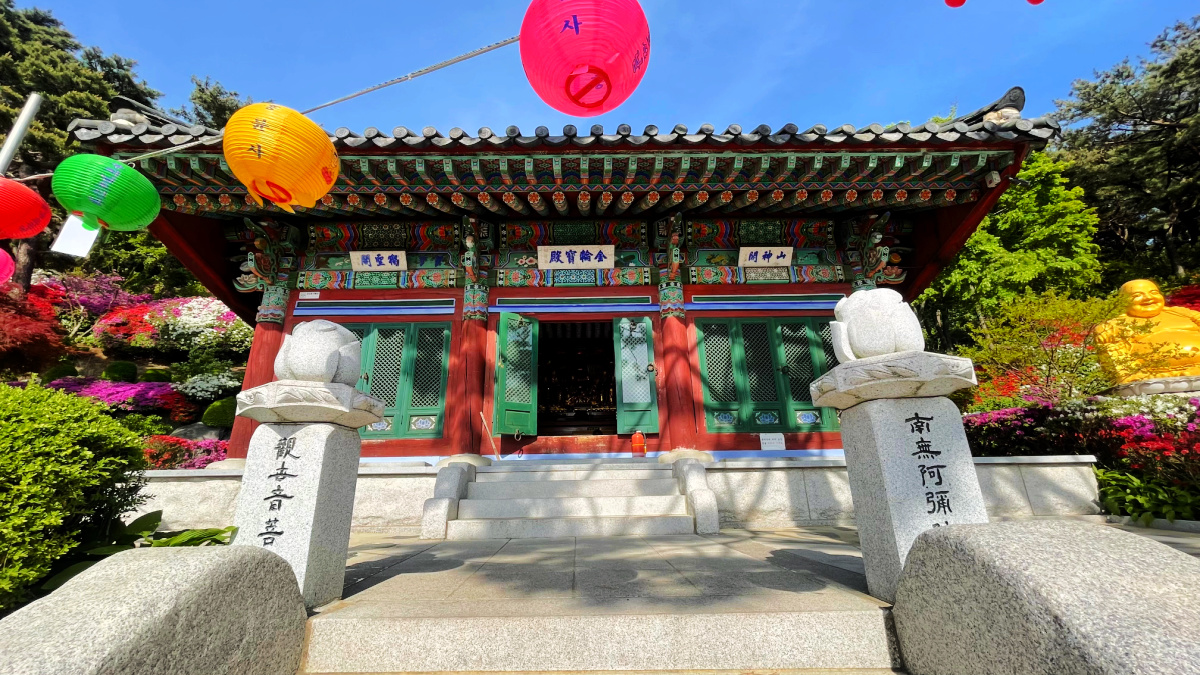 Heungryunsa Temple is a beautiful Buddhist temple site tuck by the hillyside of Cheongryunsan Mountain in Incheon area.
Heungryunsa Temple is a beautiful Buddhist temple site tuck by the hillyside of Cheongryunsan Mountain in Incheon area.Bird's Eye-View
Heungryunsa (or Heungnyunsa) Temple is conveniently built by the hills in the picturesque part of Incheon City facing Songdo Island.
It is a traditional Buddhist temple of the Jogye Order, renowned for its vibrant and colorful atmosphere. The interior of the temple is full of intricate carvings, statues, and paintings that speak to the beauty of Korean Buddhist art.
Heungnyunsa Temple also houses many historic artifacts from Korea's past and a number of shrines dedicated to the Buddha and his teachings.
For those looking for a peaceful getaway, the temple offers a range of activities including meditation sessions, temple tours, Buddhist lectures, and more. While visiting Heungnyunsa Temple visitors can also enjoy the stunning views of Incheon's skyline and Songdo Island.
Whether you are religious or not, this historic temple is a must-visit destination in Korea. So, come and experience the serenity of Heungnyunsa Temple for yourself! You won't regret it!
Heungryunsa Temple
Heungryunsa Temple is a beautiful Buddhist temple located on a hillside facing the sea (of Songdo Island) in Incheon City. My recent visit confirmed the stories I heard about its grandeur! Fantastic!
I live in Gyeyang District in Incheon, and it took me more than an hour to get there by Subway and by public bus. Heungryunsa is about 6 minutes from the bus stop on foot.
Keep reading the short version of the temple's history below. Please, enjoy reading and viewing the photos. Also, like and share this article to support this travel website.
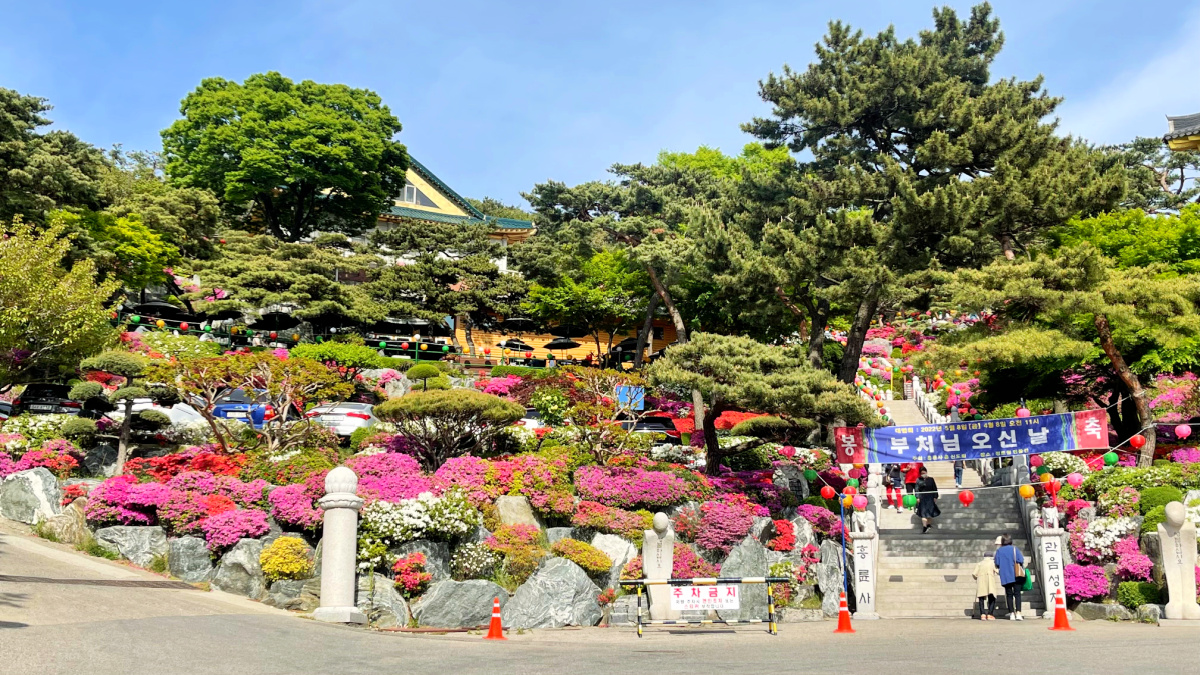 This is the colorful entrance area of the temple in late Spring and the day before Buddha's birthday in May 2022.
This is the colorful entrance area of the temple in late Spring and the day before Buddha's birthday in May 2022.Introduction
Heungryunsa Temple was established around 613 years ago by Preceptor Naong, a monk of King Gongmin during the reign of King Wu of the Goryeo Dynasty.
The temple got burned down during the Imjin War (1592). A new temple was built in 1938 but was torn down in 1966, and eight buildings were built instead.
Its former name "Cheongnyunsa" (nearby Cheongnyangsan mountain) was changed to "Heungnyunsa" in 1977, which it is known today.
The temple consists of eight buildings, including the main hall, a lecture hall, a sutra repository and three shrine halls. It houses nine statues of Shakyamuni Buddha and other Buddhist figures such as Amitabha(Sangjeon'wangbosal) and Maitreya(Mireuk).
The temple also has various cultural assets and artifacts, such as Seated Iron Amitabha Buddha, Wooden Statue of Avalokitesvara, Eight-Armed Avalokitesvara and Lion Painting.
The temple also offers a variety of Buddhist retreats and programs to help people learn more about Buddhism. It is also home to the International College of Buddhism and has hosted various international conferences on Buddhist studies and culture.
Heungnyunsa is a great place to learn more about Buddhism and its teachings, as well as the history and culture of the Korean people.
The temple also hosts a variety of festivals throughout the year, such as the Dharma Assembly, Buddha's Birthday in May, and the Flower Festival in August.
Additionally, there are special events for children such as the Children’s Day Festival and a Kite Festival. These events offer visitors a unique opportunity to take part in traditional Korean culture and learn more about Buddhism.
Heungnyunsa is an important cultural landmark for those interested in the history, culture, and religion of Korea. The temple’s architecture is beautiful and inspiring, and there are numerous statues and artifacts on display that reflect its rich past. Visitors can also explore the various religious artifacts housed in the temple library.
The grounds surrounding Heungnyunsa are also host to a variety of attractions such as a traditional Korean garden, tea houses, and souvenir shops. Visitors can also learn more about traditional Korean culture by visiting the nearby Gyeonggi Provincial Museum.
Not only is Heungnyunsa a great place to visit for its cultural attractions but it also offers many recreational activities such as hiking and cycling in the surrounding mountain range.
Additionally, the area is home to many restaurants and cafes that offer traditional Korean cuisine and drinks.
Heungnyunsa is a great place to visit for those looking to explore and appreciate both traditional Korean culture and modern-day recreation. It has something for everyone, from history buffs to adventure seekers! So be sure to check it out on your next trip to South Korea. You won't regret it!
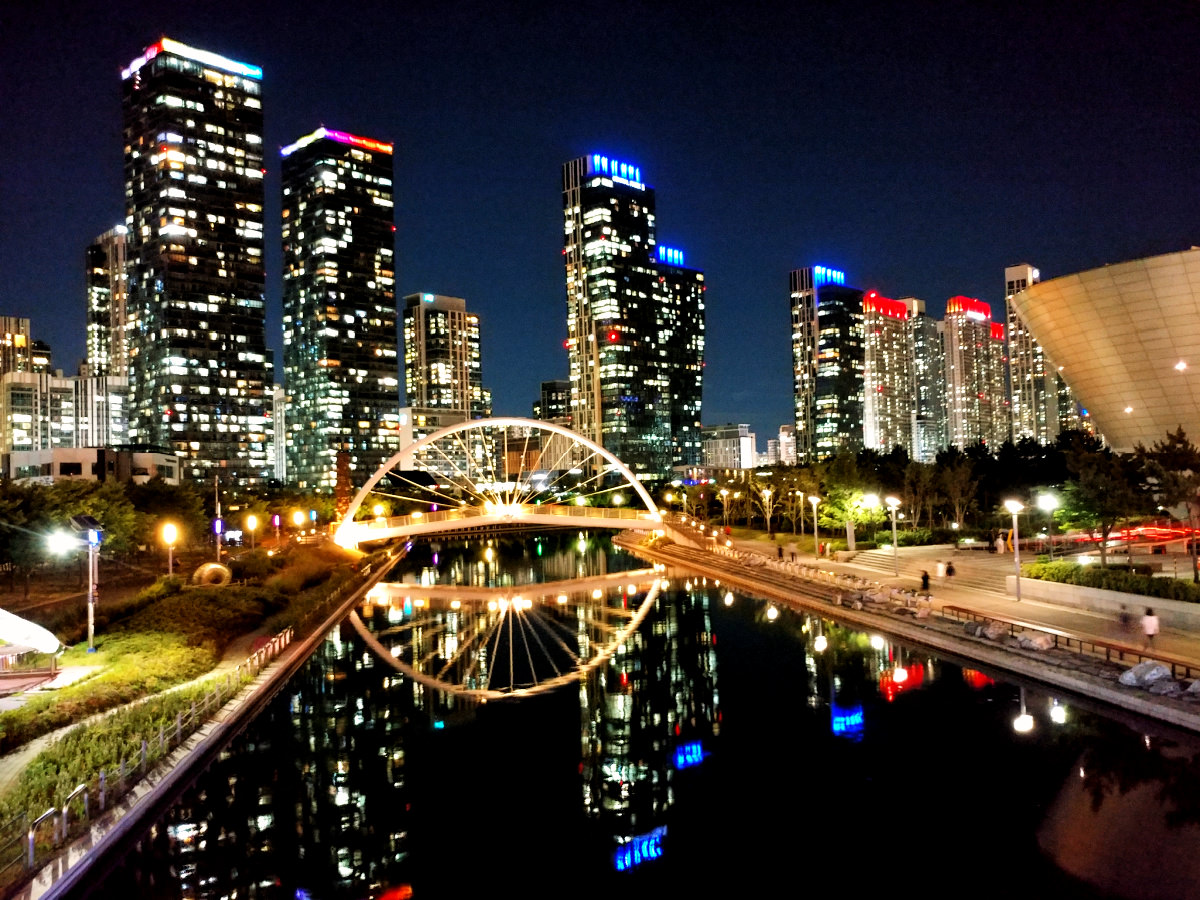 View of Songdo International City's Central Park
View of Songdo International City's Central ParkHeungnyunsa Temple is located close to Songdo International City and the Memorial Park for the Incheon Landing Operation.
The temple runs a 'temple stay' program and operates a meditation center and a Manbuljeon Hall, which holds thousands of Buddhas.
Manbuljeon Hall
Heungnyunsa Temple's Manbuljeon Hall is a large, two story wooden structure located at the center of the temple. It is dedicated to the Maitreya Buddha, who represents compassion and peace.
The hall features colorful and intricate carvings on its walls, columns, and ceiling beams.
On the first floor of the hall is an impressive statue of the Maitreya, flanked by smaller statues of two standing bodhisattvas. On either side are paintings depicting various scenes from Buddhist teachings.
The second floor houses a shrine room that displays various sutras as well as a selection of ancient artifacts relating to local Buddhist practices.
Manbuljeon Hall is a large and ornately decorated structure with intricate carvings, paintings, and artworks throughout.
The building features a multi-level structure with a main hall surrounded by four wings. The walls of the Manbuljeon Hall are adorned with vibrant artwork depicting scenes from the life of the Buddha, including his enlightenment, as well as images of deities and other Buddhist figures.
The roof is made of colorful tiles and intricate patterns adorn the windows. Inside the hall, visitors can find an impressive statue of Mireuk-bul, the Future Buddha. There is also a large altar filled with offerings for worshipers to pay respects to this enlightened being.
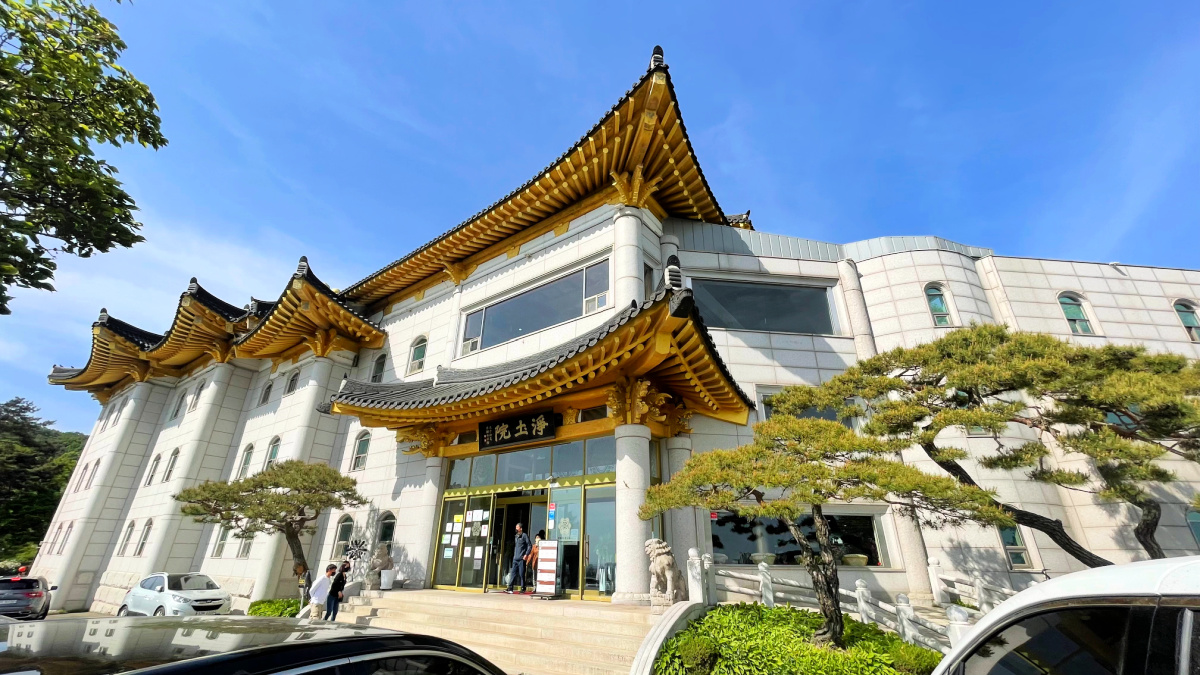 A Thousand-Buddhas Hall houses many statues of Buddha of various sizes, shapes, positions, and expressions.
A Thousand-Buddhas Hall houses many statues of Buddha of various sizes, shapes, positions, and expressions.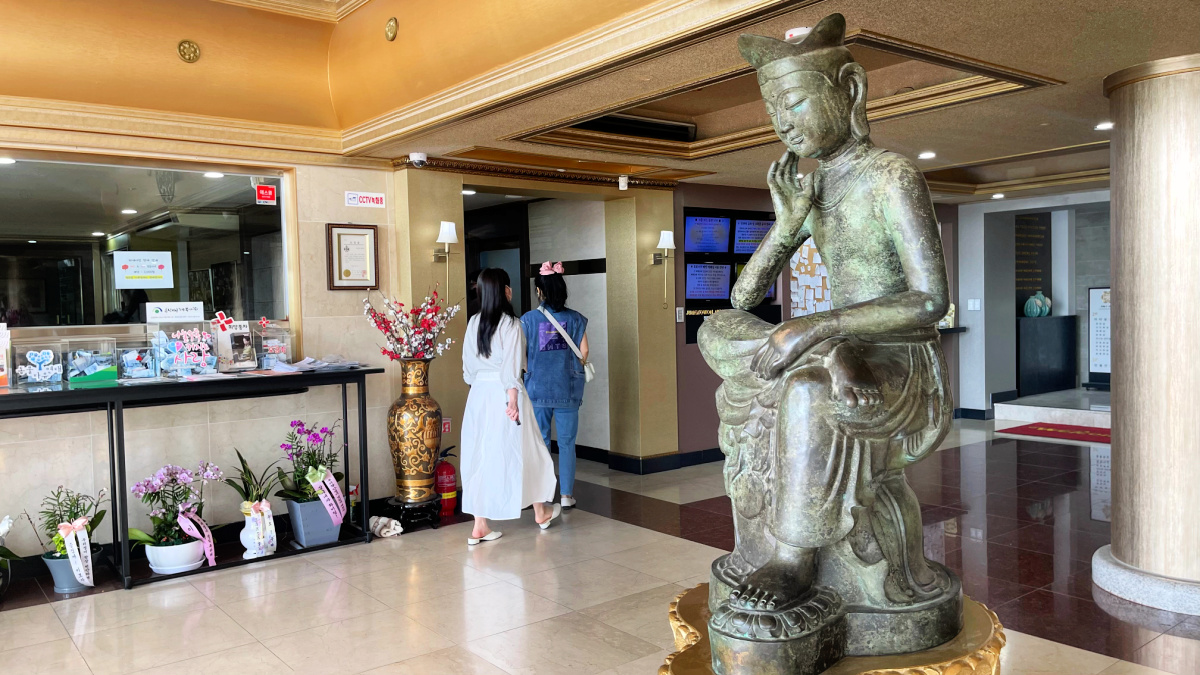

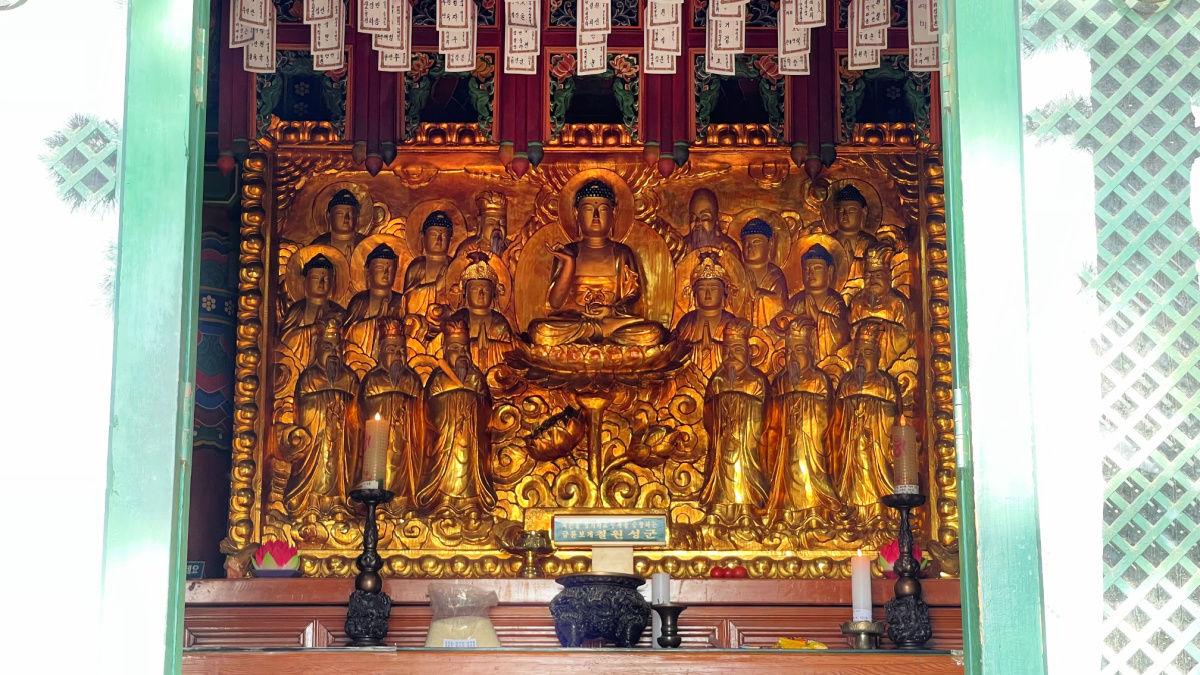
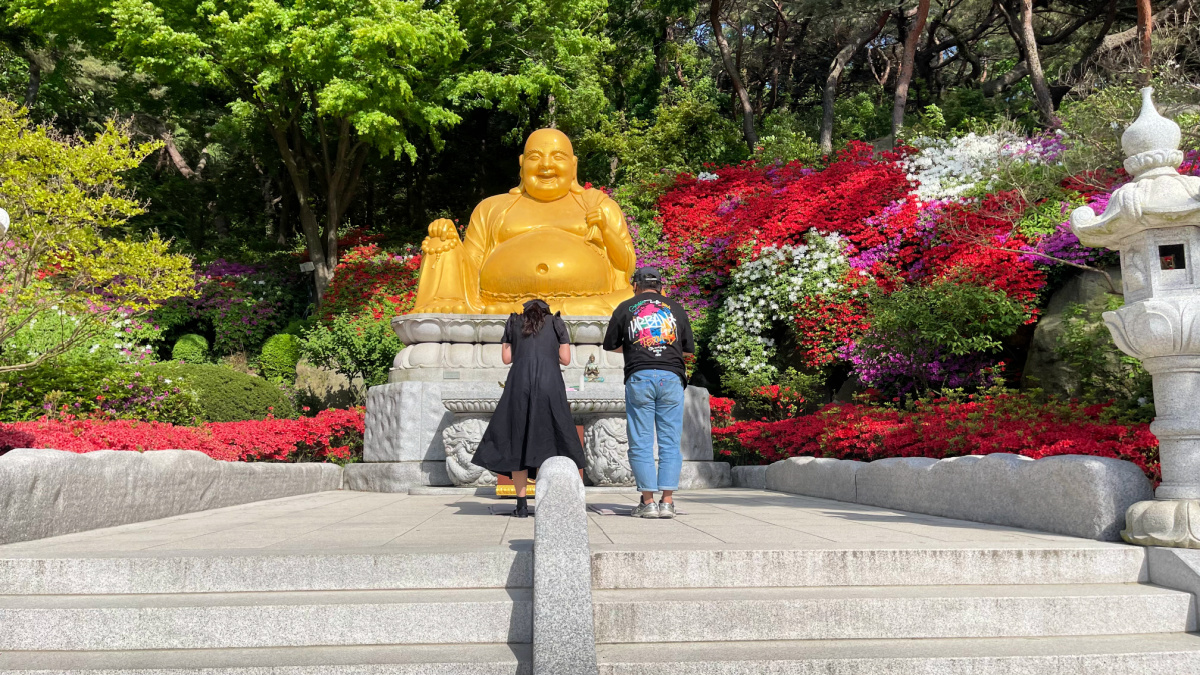
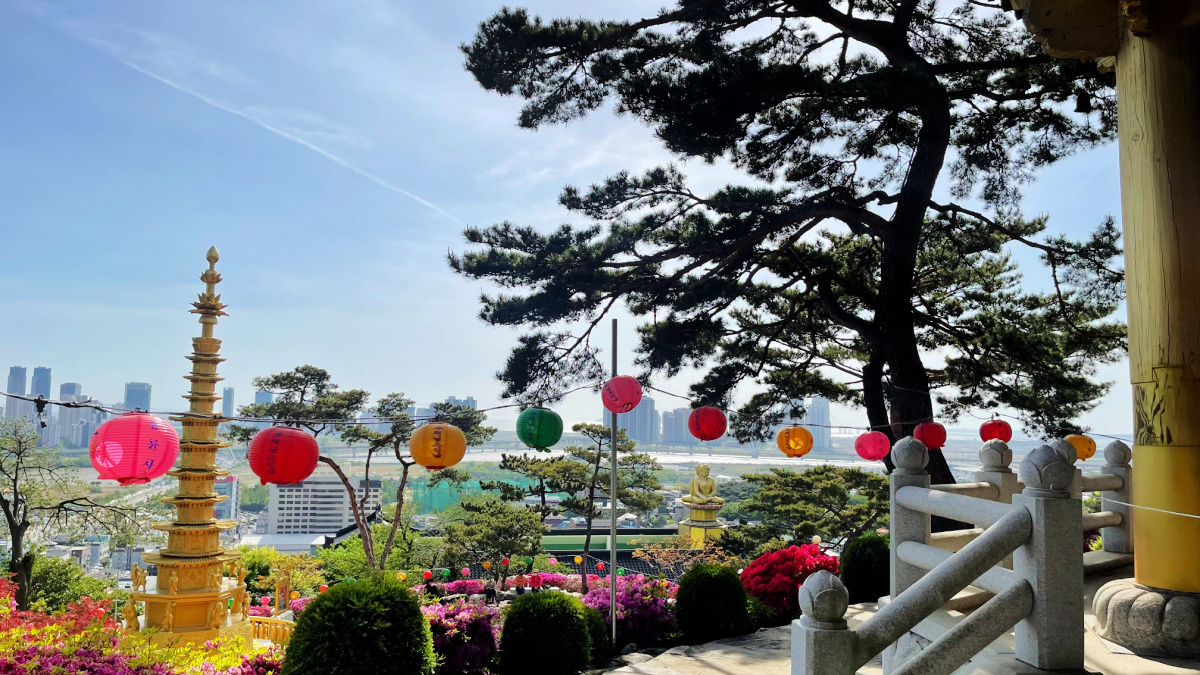
Historical Background
Buddhism was introduced to the Silla Kingdom after Baekje and Goguryeo kingdoms as Silla was geographically farther away from India and China, the origins of Buddhism religion.
When the Goguryeo monk Ado (阿道) came to Silla to spread Buddhism, with the permission of Michu Isa-geum (in 264) at his thatched house, the religion started to spread.
After being rebuilt in 544 by order of King Beopheung, that thatched house became one of the most important temples representing Silla.
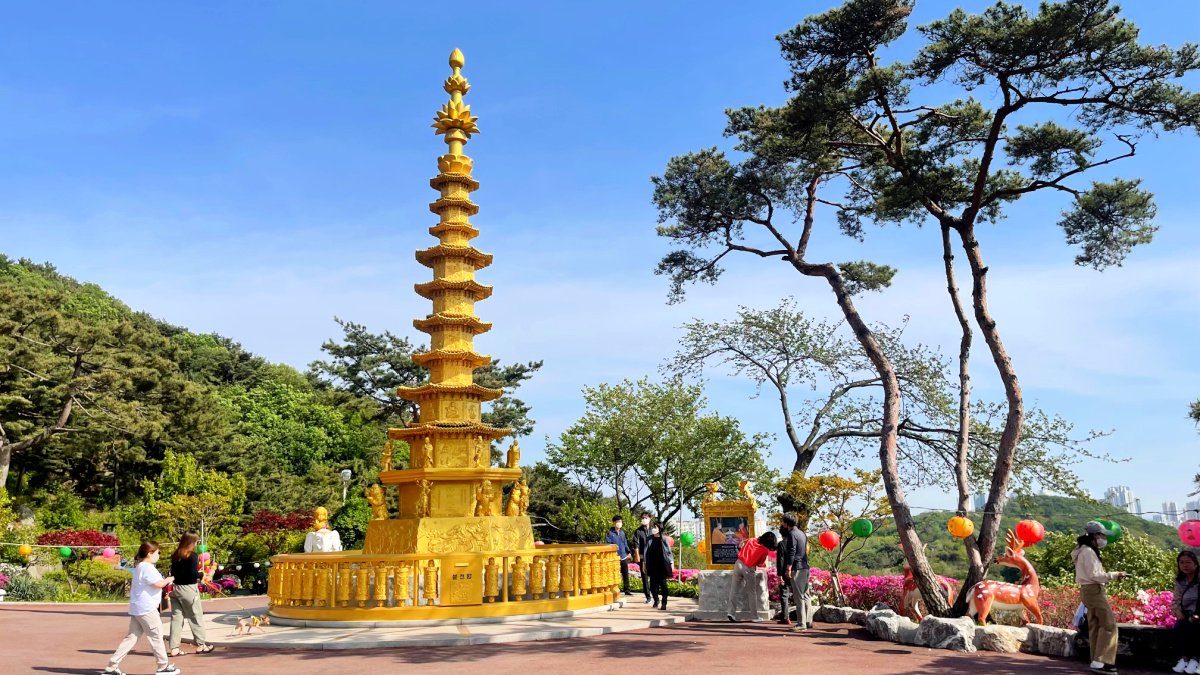
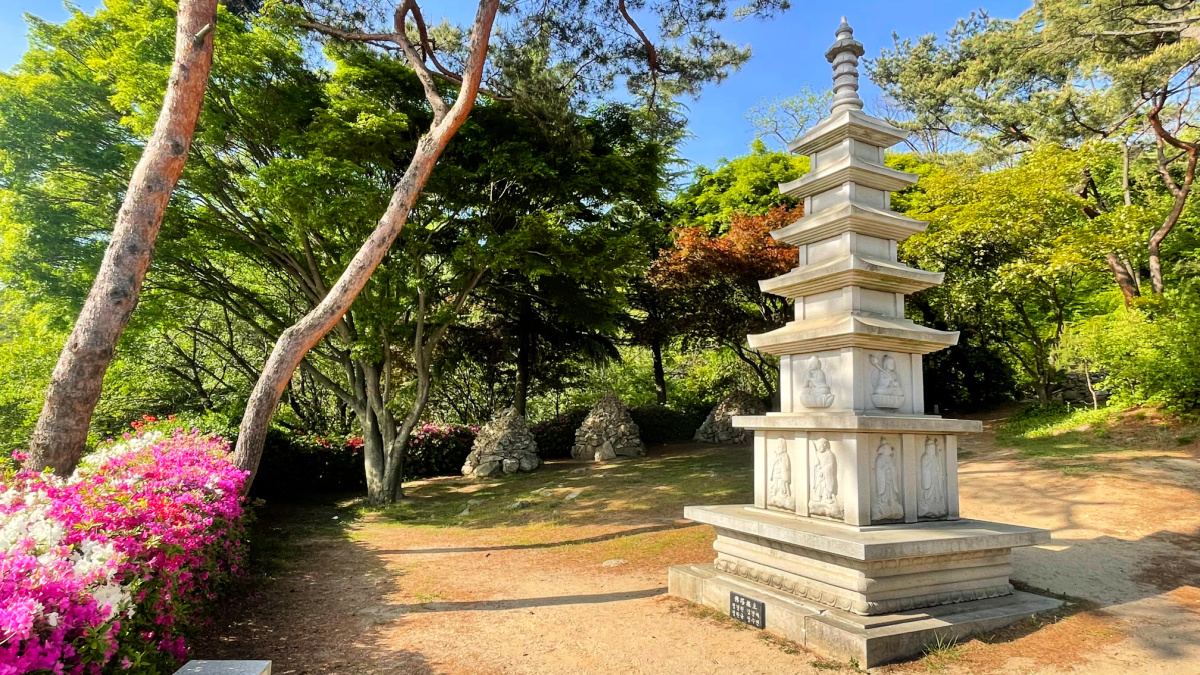
That temple is where the present Heungryunsa Temple began during the Unified Silla period. In this temple, Kim Dae-seong, the founder of Bulguksa Temple and Seokguram Grotto, was believed to have reincarnated.
However, at the beginning of the Three Kingdoms period, the temple was burned down by robbers. It was restored in 921 during the reign of King Gyeongmyeong.
Again, the rebuilt temple was burned down to ruins during the Joseon Dynasty. The present Heungryunsa Temple was rebuilt only in the 1980s.
It is also believed that Yeongmyosa, one of the other Chilcheo temples, where Heungnyunsa is located.
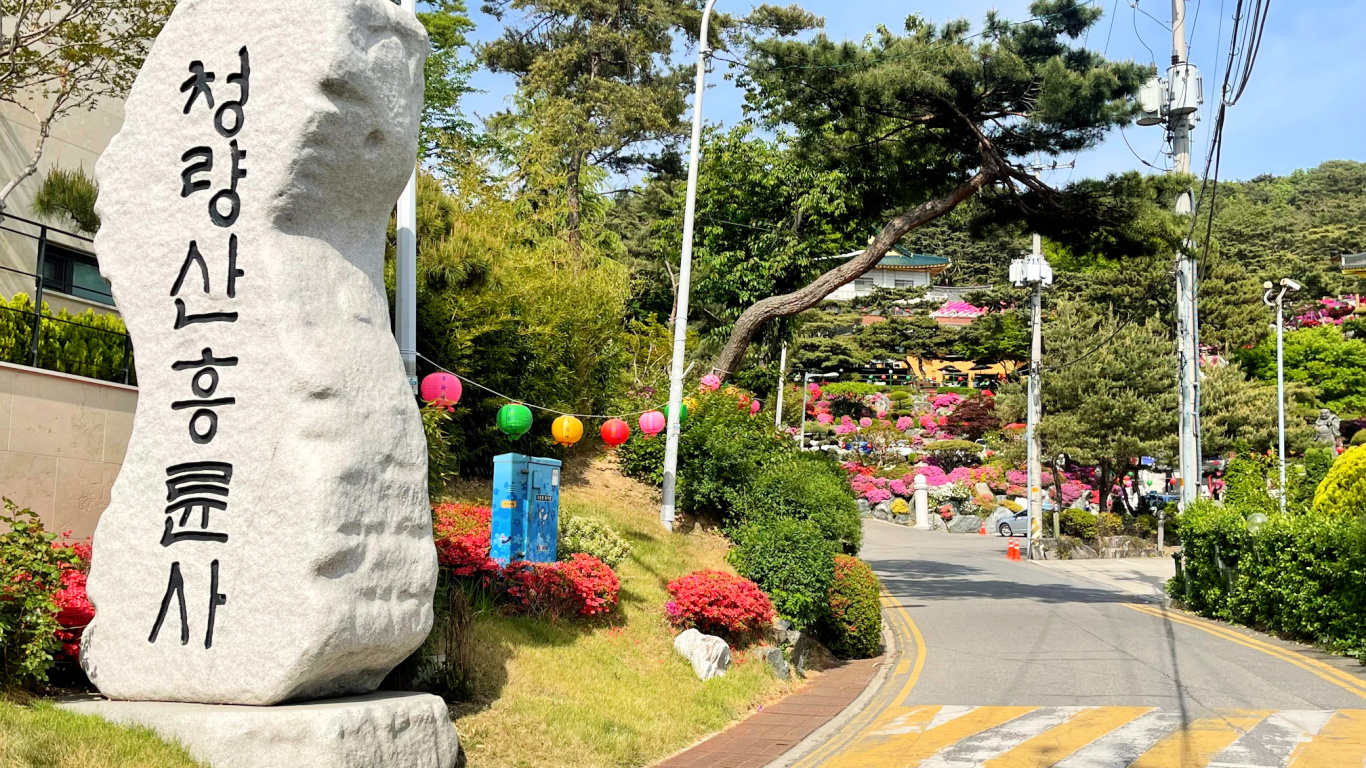 The entrance of Cheongryansan Heungryunsa Temple is on your right upon reaching the steep road.
The entrance of Cheongryansan Heungryunsa Temple is on your right upon reaching the steep road.The temple is historically important, as it has been a site of faith and resistance throughout Korea's turbulent past.
During the 17th century, Joseon Dynasty, Heungnyunsa served as a shrine for locals and travelers alike who were looking for protection from Japanese invasions.
It became a symbol of national resistance against Japanese occupation during Korea’s colonial period, when Korean independence activists congregated at the temple to share their ideas and plan demonstrations.
Over the years, Heungnyunsa has undergone numerous renovations and expansions, with new buildings being added in later centuries. Today, the temple continues to serve its original purpose, providing spiritual sanctuary for visitors and locals alike.
Getting to Heungryunsa Temple
There are three ways to get to the temple: by private car (rental), hiring a taxi, and public transport (bus and subway).
Car Rental
When you arrive at one of South Korea's international airports (e.g., Kimpo), you can hire a car from one of the rental car companies at the airport. It is actually more convenient and cheaper, especially when you travel all day than taking a taxi or other transport.
Taxi
You can hire a taxi from anywhere in the country. It is only advisable to hire one if you have another traveler with you to share and save the fare. However, it is more comfortable than public transport, especially when traveling with your heavy luggage.
Subway + Bus
I took a subway from my house and then transferred to a subway station bus.
Take the Incheon Line #1 and get off at DONGMAK Station. Head to Exit #1, take Bus #8, then get off at the Eonyang Welfare Center bus stop (8 stops from Dongmak Station's bus stop).
From the bus stop, walk up the steps and keep walking and follow the street for about 5 minutes. Once you reach a steep road and its top, turn right to find the entrance area of Heungryunsa Temple.
Thanks for visiting this travel site. Enjoy and have a safe trip.
- Home
- 15 Top Incheon Attractions
- temples
Get Exciting Activities
Book one of our exciting activities today to experience the thrill of a lifetime! Take advantage of this opportunity and secure your spot in advance.
Hotel Map Guide
Find your affordable, accessible, and comfortable hotel in Seoul at Agoda.Com. See the hotel map below...
Hotel Booking Guide
Find affordable and amazing hotels on Agoda.com using the search box below. Book now to enjoy great discounts and save!


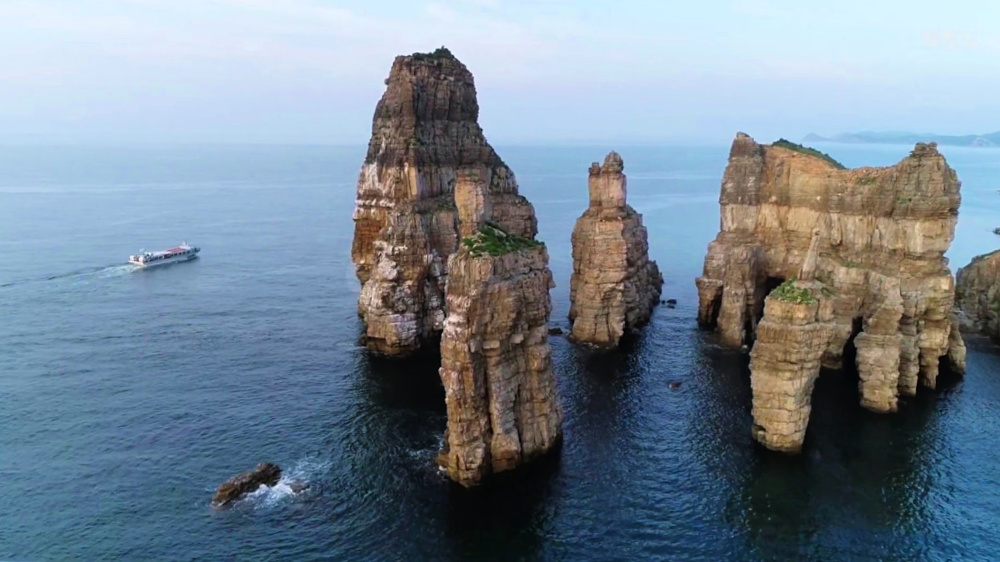




New! Comments
What do you think about this page? Leave me a comment in the box below.